
Misregulation of MYB16 expression causes stomatal cluster formation by disrupting polarity during asymmetric cell divisions (Plant Cell)
Plant Science Research WeeklyWater loss during photosynthesis is limited by specialized plant cells such as stomata, as well as cuticle formation on the epidermis. In Arabidopsis thaliana, stomata lineage is a good system in which to elucidate the interplay between biochemical signals and mechanical properties during leaf development.…
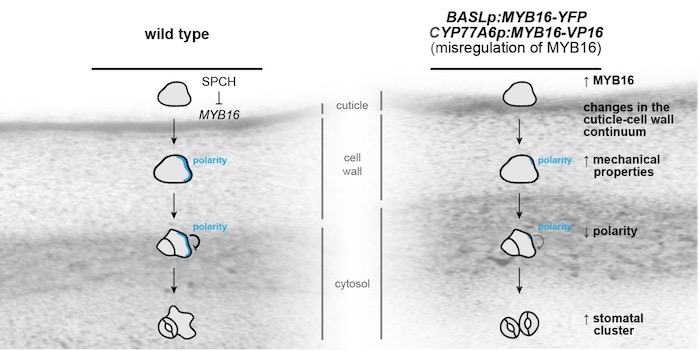
The coordination between stomata and cuticles
The Plant Cell: In a NutshellYang et al. reveal the coordination between stomatal development and cuticle formation. Plant Cell https://doi.org/10.1093/plcell/koab260
By Shao-Li Yang and Chin-Min Kimmy Ho
Background: The plant epidermis is composed of functionally specialized cells, such as the valves on the leaf surface known…
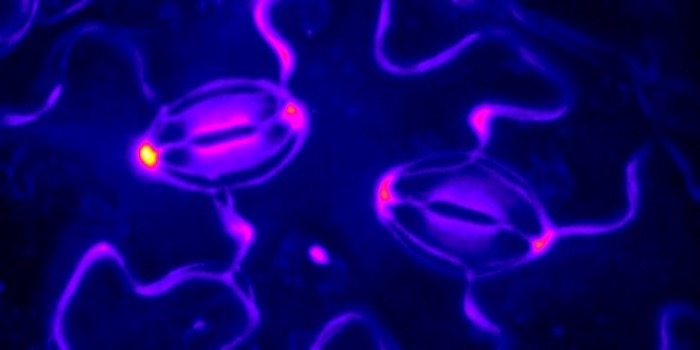
Pectate lyases prune pectin to potentiate stomatal dynamics
The Plant Cell: In a NutshellChen et al. uncover the effects of a pectate lyase-like gene on cell wall mechanics and cell pressurization in guard cells. The Plant Cell (2021) https://doi.org/10.1093/plcell/koab161
By Yintong Chen and Charles T. Anderson
Department of Biology, The Pennsylvania State University, University…
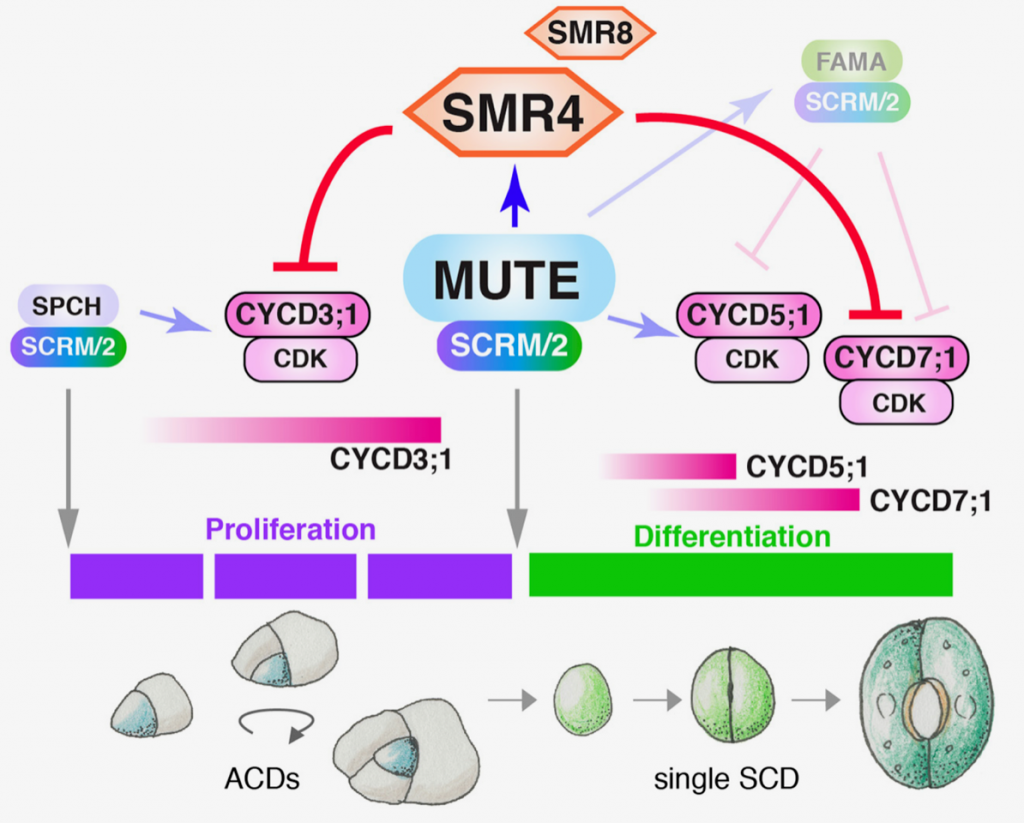
Deceleration of cell cycle underpins a switch from proliferative-to-terminal division in plant stomatal lineage (bioRxiv)
Plant Science Research WeeklyPrecise cell cycle control is essential for the differentiation of specialized cell types. Stomata, essential pores for gas exchange located in the epidermis, are generated via proliferative asymmetric cell division (ACD) of a transient stem cell called a meristemoid, which will give rise to a guard…

A spatiotemporal molecular switch governs plant asymmetric cell division (Nature Plants)
Plant Science Research WeeklyIn multicellular organisms, stem cells produce various cell types through asymmetric cell division (ACD), which is achieved is through polarization of cell-fate determinant proteins in the ACD progenitor cells. In Arabidopsis stomatal development, an ACD progenitor cell, the meristemoid mother cell (MMC),…
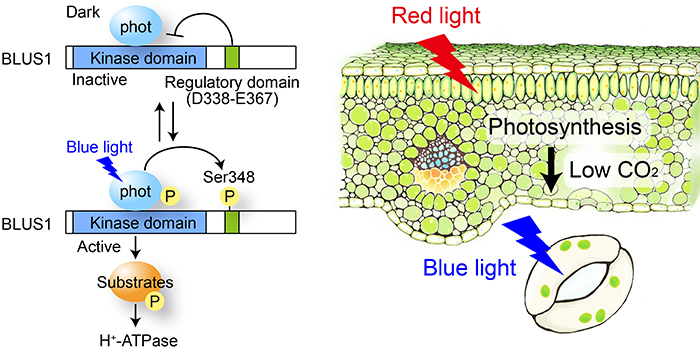
How Blue and Red Light Synergistically Drive Stomatal Opening
The Plant Cell: In a NutshellHosotani et al. explore the molecular mechanisms that modulate stomatal opening under different light conditions.
by Sakurako Hosotani and Atsushi Takemiya (Yamaguchi University)
Background: Opening of stomatal pores is essential for photosynthetic CO2 fixation and transpiration in terrestrial…
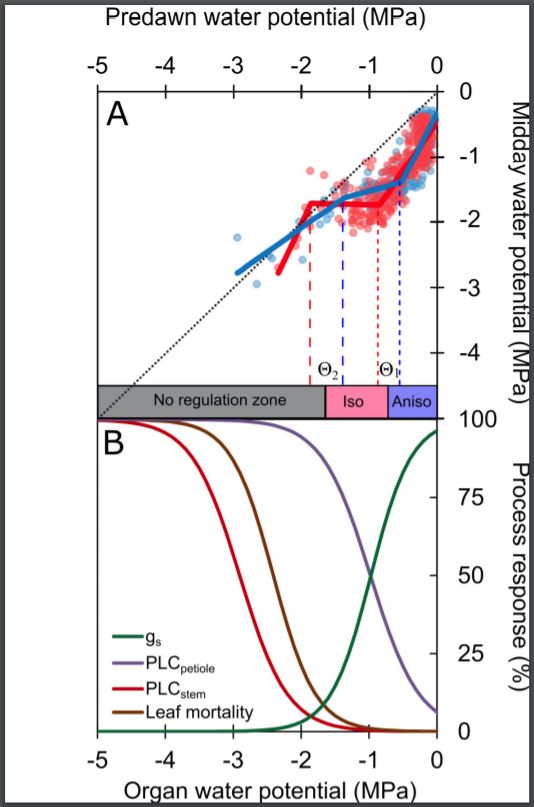
Extrapolating physiological response to drought through step-by-step analysis of water potential
Blog, Plant Physiology, Plant Physiology: News and Views, ResearchGuillaume Charrier
Université Clermont Auvergne, INRAE, PIAF, F-63000 Clermont-Ferrand, France.
guillaume.charrier@inrae.fr
Water potential (Ψ) defines the energy required to move water between the different compartments of a closed system. Water flows passively in the direction of decreasing…

KIN10 promotes stomatal development through stabilization of the SPEECHLESS transcription factor (Nat. Commun.)
Plant Science Research Weekly
Plants communicate with the environment through stomata (i.e., pores found on leaf surfaces) and regulate gas exchange depending on internal and external cues by optimizing stomata density. Still, how plants integrate metabolic and environmental signals remain to be determined. Here, Han and colleagues…

Review: Guard cell metabolism and stomatal function (Annu. Rev. Plant Biol.)
Plant Science Research WeeklyStomatal conductance, gs, is one of the most important and highly regulated plant processes. Lawson and Matthews review how guard cell metabolism, stomatal anatomy and patterning, and signals from the mesophyll affect gs which in turn affects plant productivity and water use efficiency. This is an excellent…

